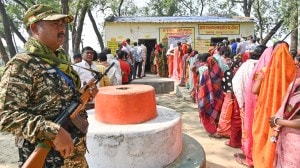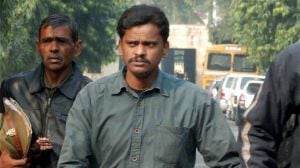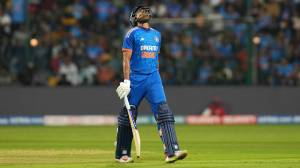As the general elections draw near, the BJP government has upped the ante, underlining its confidence by declaring a seat target that is 67 more than the number of constituencies it won last time, and already talking of plans for its third term in power.

At the same time, the BJP is aggressively pursuing both new alliances as well as leaders to woo over to its side from other parties – both big and small. Party leaders said that deals with the TDP-JanaSena Party in Andhra Pradesh and Rashtriya Lok Dal in Uttar Pradesh have been almost sealed, while back-channel talks were still on with the Akali Dal despite the setback due to the farmer protests.
Story continues below this ad
The string of Bharat Ratnas, for former prime ministers P V Narasimha Rao and Chaudhary Charan Singh, as well as M S Swaminathan and Karpoori Thakur, in an election year, were also seen as aimed at specific political messages.
While the BJP’s rivals insist these show the party’s “desperation” to scramble numbers, leaders say there is a method to this step-by-step collation – to not just win a comprehensive majority but also come close to 50% in terms of vote share. Incidentally, the Opposition’s INDIA bloc often falls back on the fact that 64%-odd voters did not vote for the BJP in 2019, to justify its formation.
In fact, the BJP government has a specific figure that it hopes to surpass: the 49.10% votes the Congress got when it won 414 seats in the post-Indira Gandhi assassination election of 1984 (which remains the largest number of seats won by a party in the Lok Sabha).
In other words, to go up from the 37.36% votes it won in 2019 to somewhere close to 50%, the BJP will need to increase its vote share in almost every state.
Story continues below this ad
While Modi may have himself unveiled the 370-seat target, from the floor of Parliament, senior leaders admit the going remains tough, given that the party has already saturated its gains in the Hindi heartland and other traditional bastions.
The BJP had picked up all the seats in Rajasthan, Haryana and Gujarat in 2019, lost just one in Madhya Pradesh and two in Chhattisgarh, even as the NDA alliance led by it had won all but one seat in Bihar. In Uttar Pradesh, the state with the largest number of Lok Sabha seats, the BJP had won 62 of the 80 constituencies, and is confident of maintaining – if not improving – the tally on the strength of the goodwill created by the Ram Temple consecration.
Even in Karnataka, the only Southern state where the BJP is a lead party, the BJP had claimed 28 of the 29 seats in 2019, with the only remaining MP, Sumalatha Ambareesh (Independent), lending her support to the Modi government in the Lok Sabha. Despite its decimation in the 2023 Karnataka Assembly elections, the BJP hopes to maintain its dominance after tying up with the JD(S) as an ally.
BJP leaders say the party will also increase its numbers in Odisha and Telangana, states where its efforts to improve its presence have not been very successful.
Story continues below this ad
However, even if all these numbers hold, the BJP tally may not cross 370.
Hence the push for alliances in states like Andhra Pradesh and Kerala, where even if the BJP does not win seats, it can pick up votes on strength of these tie-ups.
The BJP’s National Convention held recently laid out specific tasks for its workers in the run-up to the polls, down to the booth level. The party will now hold state, district, block and booth-level meetings to reinforce the message.
Party sources said the BJP will also modulate its “messaging”, especially on Hindutva, with the Ram Temple inauguration having already accomplished half the job. It realises that while aggressive Hindutva might consolidate votes behind it in the northern states, it might alienate voters in the South, where the messaging will instead be focused on Modi’s popularity.
Story continues below this ad
Leaders said that apart from delivering a decisive message to the Opposition via a victory with a near-majority of the votes, Modi believes that such affirmative numbers would clear the remaining hurdles in the way of measures that he wants his next government to take.

































